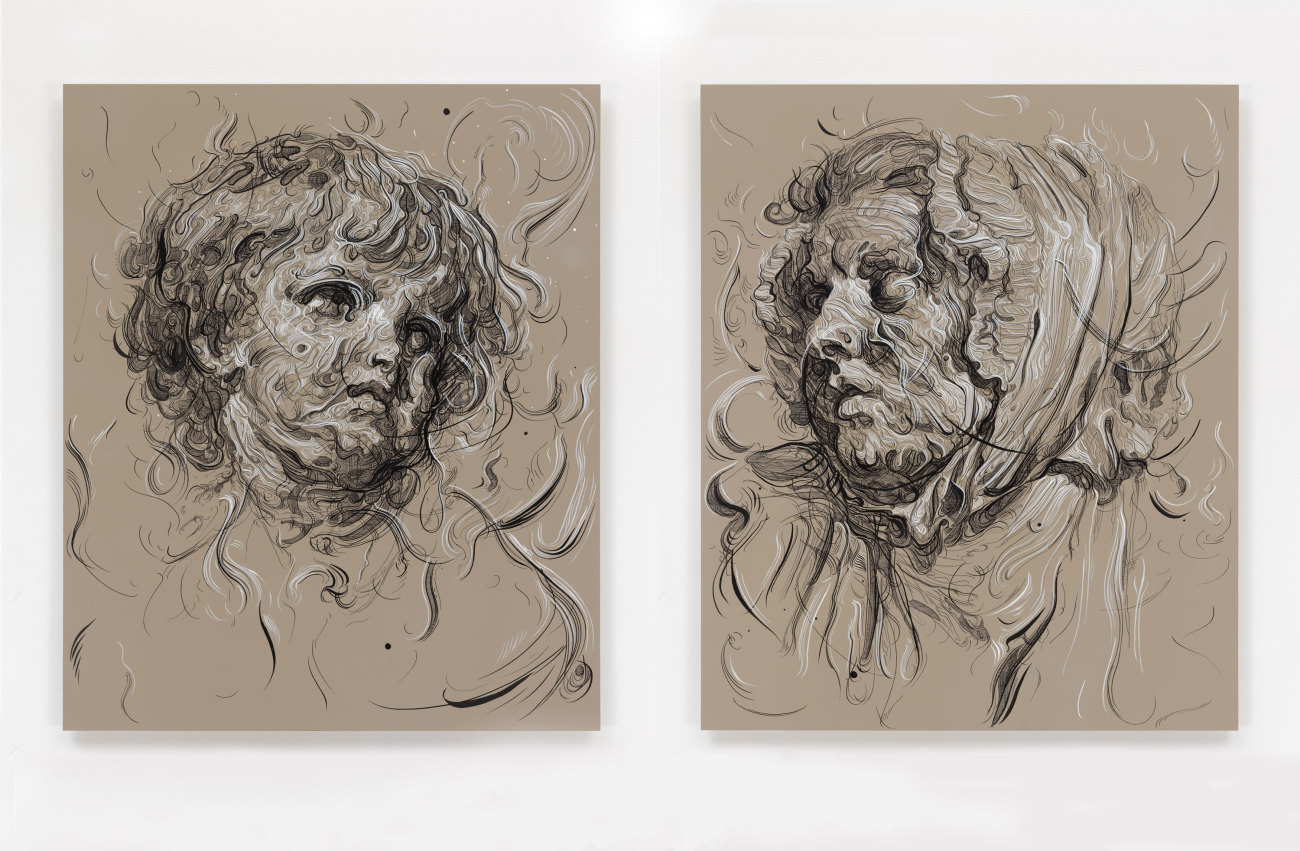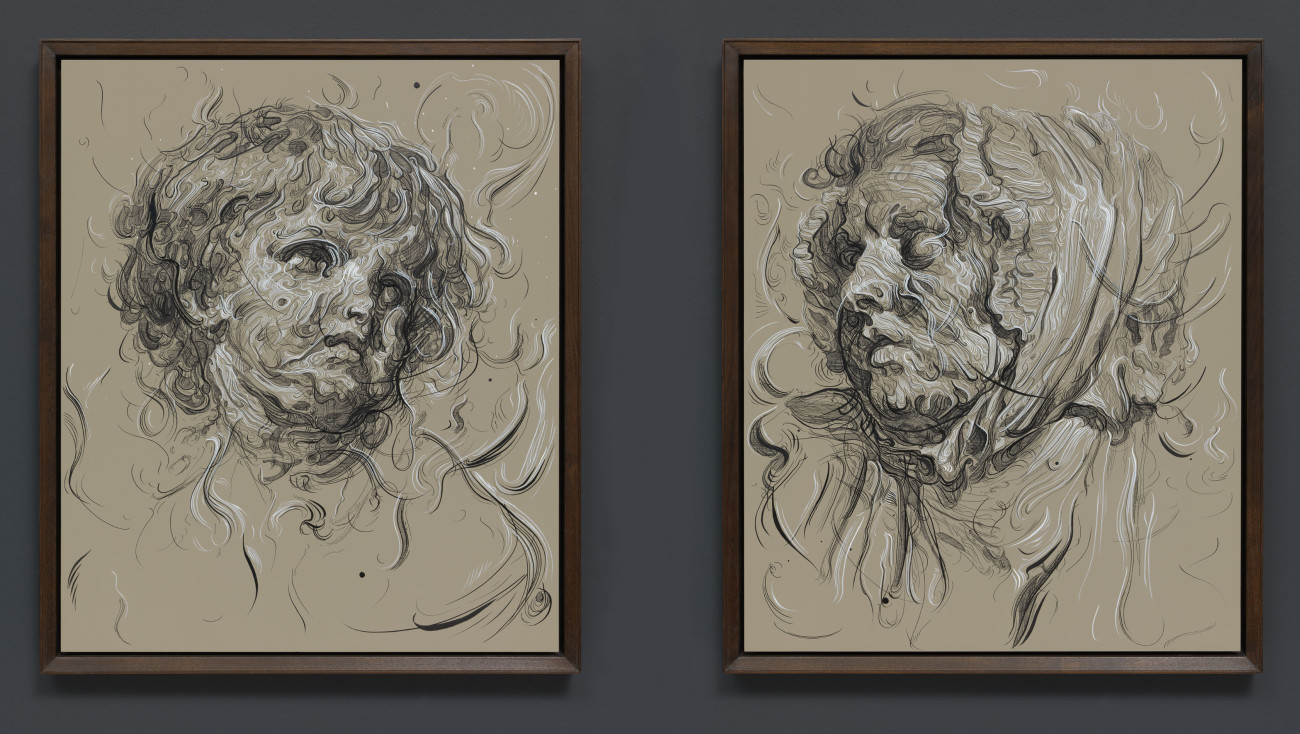Hinkley Point, 2016
Indian ink and acrylic on panel, diptych
each 60 x 50 cm (23 5/8 x 19 3/4 in)
Hinkley Point is a scenic headland on the Bristol Channel coast of Somerset, England, now dominated by two nuclear power plants. The construction of a third plant, Hinkley Point C, has recently been approved, amidst much protest and debate. This new plant, together with the proposed Sizewell C in Suffolk, are scheduled to provide 13% of the UK's energy needs by the early 2020s.
The drawing style of these two portraits is very open and fluid. The brush marks and pen lines swirl and loop around, in and out of the heads. The very graphic marks highlight the translucency and movement of the figures. The heads appear to be either coalescing or decaying, and are unstable. The work tries to describe the anatomically unstable structure of our organic bodies, and the atomic structure of our cells.
The fact that the woman and the child are on separate panels indicates a distance or separation between the two. Their relationship could be described as being in a violent reaction or meltdown, or a traumatic but loving entanglement. The mark making tries to depict the atomized structure of us all, and our lack of permanence.
- Glenn Brown, 2016
The drawing style of these two portraits is very open and fluid. The brush marks and pen lines swirl and loop around, in and out of the heads. The very graphic marks highlight the translucency and movement of the figures. The heads appear to be either coalescing or decaying, and are unstable. The work tries to describe the anatomically unstable structure of our organic bodies, and the atomic structure of our cells.
The fact that the woman and the child are on separate panels indicates a distance or separation between the two. Their relationship could be described as being in a violent reaction or meltdown, or a traumatic but loving entanglement. The mark making tries to depict the atomized structure of us all, and our lack of permanence.
- Glenn Brown, 2016



